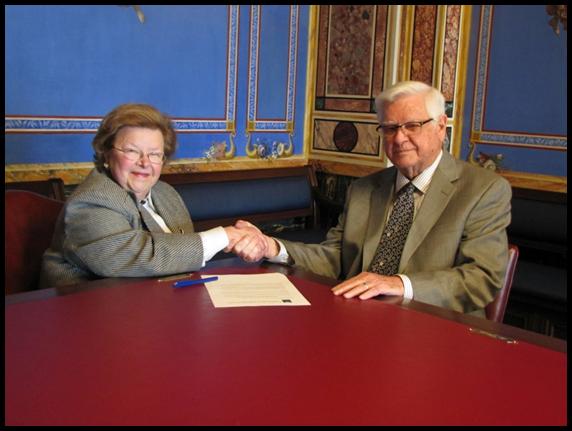Congress’ top appropriators on Monday night finalized a massive $1.012 trillion spending bill to fund the government, a modest bipartisan achievement but one that constitutes a major break from years of governing in crisis mode.
Here are five things to know about the omnibus appropriations bill, which collects all of the various government spending into one bill, negotiated by House Appropriations Chair Hal Rogers (R-KY) and Senate Appropriations Chair Barbara Mikulski (D-MD). It spends $520.5 billion on defense and $491.7 on domestic non-defense programs, based on levels agreed to in the two-year budget deal reached by Rep. Paul Ryan (R-WI) and Sen. Patty Murray (D-WA), designed in large part to ease the automatic across-the-board sequestration cuts.
1. It tweaks the Ryan-Murray budget to exempt disabled veterans from pension contribution changes
One of the provisions in Ryan-Murray requires federal workers to contribute more to their retirement benefits — an effective pension cut of $12 billion: $6 billion each for civilian and military employees. After howls from Senate Republicans and veterans advocacy groups about the impact of the policy on military service members, Murray began backing away from this aspect of the agreement last month. The omnibus bill tweaks it to exempt disabled veterans and survivor families.
“During consideration of the Bipartisan Budget Act, some of my colleagues raised legitimate concerns about how these reforms would affect disabled retirees and survivors’ benefits,” Ryan said. “So Senator Murray and I promised to support an amendment to the law that would exempt them from the proposal.”
2. Scientific research funding remains historically low
The bill provides $29.9 billion in funding for the National Institutes of Health. That’s a bit higher than it was supposed to be under sequester levels. But it is lower by about $950 million than its 2012 level, according to the NIH, and when adjusted for inflation, it is lower than it was throughout most of George W. Bush’s presidency.
“[The legislation] falls short of restoring funding for lifesaving [NIH] biomedical research,” Carrie Wolinetz, the president of United for Medical Research, told the Huffington Post. “The proposed package won’t adequately reverse the damage done by last year’s budget sequester and ensure the nation’s biomedical research enterprise makes continued progress in lifesaving research and development.”
3. It defunds the now-defunct group ACORN — again
Remember ACORN, the community activist group that got into some voter registration controversies and became a favorite target of Republicans upon spawning conspiracy theories that it stole the 2008 election? The omnibus spending bill goes out of its way to prohibit federal funding of the group, even though it ceased to exist in 2010.
“None of the funds made available under this Act may be distributed to the Association of Community Organizations for Reform Now (ACORN) or its subsidiaries,” the bill declares.
4. It eases $63 billion in sequestration cuts — without raising taxes
The omnibus begins the process of easing $63 billion in sequester cuts over two years, per the Ryan-Murray agreement. Some of the money is made up for with targeted spending cuts specified in this bill, and some of it is accounted for in higher revenues such as a hike in airline ticket fees. Tax revenues are untouched. Obamacare funding is untouched.
The bill averts $20 billion in new defense sequester cuts set to take effect on Wednesday. Republican military hawks helped pave the way for the budget deal by screaming about the harm to national security caused by the cuts, and refused to continue them into 2014.
5. It’ll be supplemented with a 3-day bill to avert a government shutdown
Government funding technically only runs through Wednesday, at which point there would be a shutdown if new legislation isn’t enacted. The omnibus, being based on a strongly bipartisan budget deal, is expected to pass — but it may get bogged down in the legislative process, especially in the Senate where a single member can hold it up for days. So Rogers and Mukulski have agreed to move a three-day continuing resolution to avert a shutdown while Congress wraps up passage of the trillion-dollar omnibus bill.






